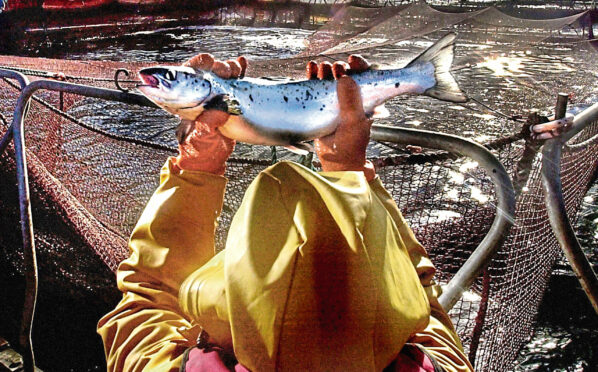The leaders of Scotland’s main seafood and food trade bodies have ramped up pressure on the UK Government to help resolve delays to exports.
Dozens of lorry-loads of fish have failed to leave Scotland on time since the full Brexit regulations came into force on January 1.
Confusion over paperwork, the extra documentation needed and IT problems have all contributed to hold-ups.
Bosses representing Scotland’s valuable salmon farming sector – which produces the UK’s biggest food export – have today joined forces with their seafood and food and drink counterparts to appeal for a lenient approach to help exports get through to the main European markets more smoothly.
The leaders of all of Scotland’s main food and drink bodies – including Scotland Food and Drink (SF&D), the Scottish Salmon Producers’ Organisation (SSPO) and Seafood Scotland – wrote to the prime minister in November appealing for a gradual implementation period for the new rules, but without success.
They say the Brexit deal, which was agreed by the UK and the EU on Christmas Eve, just a week before the new regulations came into effect, gave businesses no time to prepare for the huge changes necessary to get produce to the continent.
Every delay forces the price of our product down and hands the initiative to our international competitors.”
Scottish Salmon Producers’ Organisation chief executive Tavish Scott
Salmon is the UK’s biggest food export. In a normal January, around 3,100 tonnes of whole, fresh/chilled salmon – worth £23 million – are exported to the EU – the vast majority going through France.
This means that every day, more than 100 tonnes of whole fresh Scottish salmon, with an export value of £750,000, should be en route to the EU.
SSPO chief Executive Tavish Scott said: “Had a deal been concluded even a couple of months ago, that would have given our producers and hauliers the time to test out the new systems, trial the paperwork and get everything in place.
“As it is, we have had lorry loads of salmon stuck in Scotland, waiting for the right paperwork, we have seen delays in France because of IT problems in bringing in whole new systems and confusion everywhere.
“Our members are resourceful and have been trying everything they can to get fish to customers in Europe, including new routes, but every delay forces the price of our product down and hands the initiative to our international competitors.”
‘Enormous difficulties’
Donna Fordyce, head of Seafood Scotland, said: “All our producers have been working incredibly hard to work through all the extra red tape which has been put in place since January 1 – but it is an almost impossible task, given the lack of preparation time.
“The UK Government has to realise the enormous difficulties that have been placed in the way of exporters simply because there wasn’t a workable system in place by the end of Brexit transition, despite numerous warnings that there would be issues.”
SF&D chief executive James Withers added: “For the last few months we have been appealing to the UK Government to agree a grace period with the EU.
“We wanted to see the gradual implementation of the new Brexit trade rules, a six-month bedding-in period which would have allowed exporters and the EU to adjust to the new demands.
“Instead, we have had to cope with a cliff edge with everything changing on January 1. We warned this would lead to problems but our appeals for the grace period were ignored.”
In the absence of that “grace period”, the industry bosses want the UK Government to work with French authorities to deliver a “light touch” approach to paperwork until everything settles down.
They also want both the UK and Scottish government to liaise closely with hauliers, local authorities and all the agencies dealing with the new paperwork to make sure adequate resources are in place.
The UK Government is waiving many of the border checks which should be in place for imports.
Scotland’s seafood industry has urged ministers to work with their French counterparts to get a similar approach adopted for exports to the EU.
- One of the main changes of Brexit has been the requirement for all produce of animal origin which is exported to the EU to carry an export health certificate (EHC). These can only be certified by a vet or an authorised certification officer, usually an environmental health officer.
- Seafood producers also have to provide significant extra documentation for the certifying officers. Checking this paperwork is taking time.
- Hubs have been set up to co-ordinate the production, allocation and certification of EHCs but the sheer volume of extra paperwork needed has meant delays, resulting in lorry loads of seafood being dispatched late.

